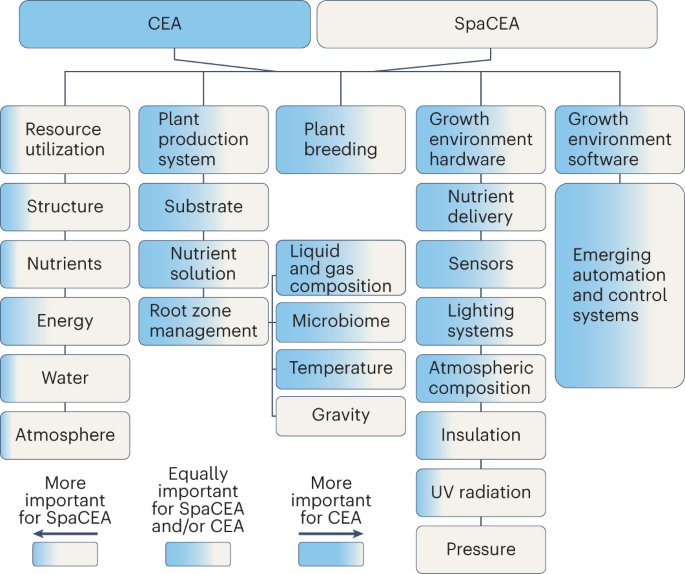
Space controlled environment agriculture offers pathways to improve the sustainability of controlled environmental agriculture on Earth
- Select a language for the TTS:
- UK English Female
- UK English Male
- US English Female
- US English Male
- Australian Female
- Australian Male
- Language selected: (auto detect) - EN
Play all audios:

Terrestrial controlled environment agriculture (CEA) will have an increasingly important role in food production. However, present CEA systems are energy- and resource-hungry and rarely
profitable, requiring a step change in design and optimization. Here we argue that the unique nature of space controlled environment agriculture (SpaCEA), which needs to be both highly
resource efficient and circular in design, presents an opportunity to develop intrinsically circular CEA systems. Life-cycle analysis tools should be used to optimize the provision and use
of natural or electrical light, power, nutrients and infrastructure in CEA and/or SpaCEA systems, and to guide research and development into subsystems that bring strong environmental
advantages. We suggest that SpaCEA public outreach can also be used to improve the perception of terrestrial CEA on Earth by using space as a gateway for exhibiting CEA food growing
technologies. A substantial focus on SpaCEA development should be viewed as an efficient contribution to addressing major current CEA challenges.
We thank the Institute of Sustainable Food at the University of Sheffield for funding this work. We also thank K. Ostojic from RAL Space for inputs in the early discussions on this
Perspective.
These authors contributed equally: Harry C. Wright, Luke Fountain, Alexis Moschopoulos.
Department of Chemistry, University of Sheffield, Sheffield, UK
Department of Earth and Environmental Sciences, The University of Manchester, Manchester, UK
Manchester Institute of Biotechnology, The University of Manchester, Manchester, UK
Plants, Photosynthesis and Soil, School of Biosciences, University of Sheffield, Sheffield, UK
Space Group, School of Aerospace, Transport & Manufacturing, Cranfield University, Cranfield, UK
RAL Space, STFC Rutherford Appleton Laboratory, Harwell Campus, Didcot, UK
Nature Food thanks Andrew Beacham and the other, anonymous, reviewer(s) for their contribution to the peer review of this work.
Publisher’s note Springer Nature remains neutral with regard to jurisdictional claims in published maps and institutional affiliations.
Springer Nature or its licensor (e.g. a society or other partner) holds exclusive rights to this article under a publishing agreement with the author(s) or other rightsholder(s); author
self-archiving of the accepted manuscript version of this article is solely governed by the terms of such publishing agreement and applicable law.
Anyone you share the following link with will be able to read this content:
